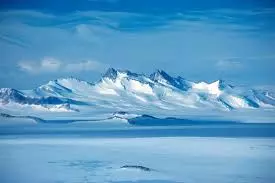Antarctica’s hidden mountain range
About 90% of Antarctica is buried under thick ice, and the average depth of this layer is nearly 2.2 kilometres, which has remained untouched for more than 34 million years.

Picture courtesy : X
Just when we think our ice caps have nothing left to surprise us with, it always proves us wrong. Antarctica might seem like a cold and desolate landscape, but beneath the ice sheet lies an entire hidden world of biomes, rivers and lakes, mountains and valleys, primordial bacteria and remnants of ancient ecosystems far before us.
About 90% of Antarctica is buried under thick ice, and the average depth of this layer is nearly 2.2 kilometres, which has remained untouched for more than 34 million years. Even after years of research, scientists believe that they have just scratched the surface and are still clueless about what lies beneath this frozen blanket.
Beneath the surface, scientists have discovered 400 hidden lakes that might hold the key to life forms unknown to the rest of the world. The largest found Lake Vostok remained four kilometres under ice, leaving us to wonder what is yet left to discover.
There are peaks like the Transantarctic Mountains that tower above water, but some peaks like the ancient Gamburtsev Subglacial Mountains in the middle of East Antarctica are completely buried. While the Gamburtsev Mountains are similar to the European Alps in scale and shape, they are not visible because of being entombed beneath kilometres of ice.
Typically, mountain ranges rise in places where two tectonic plates clash, but East Antarctica has been stable tectonically for millions of years.
A new study published in Earth and Planetary Science Letters reveals how this hidden mountain chain peaked more than 500 million years ago when supercontinent Gondwana formed from colliding tectonic plates. This study offers new insights into how continents and mountains evolve over geological time and explains why Antarctica’s interior has remained stable for a really long time.
Learning further about Antarctica’s hidden secrets will help scientists prepare for the future. It can help predict how quickly the Antarctic ice sheet may melt and change, revealing much about Earth’s past and future.
The article is authored by Nikhila Gayatri Kalla, a student of Christ University, Bengaluru interning with Deccan Chronicle.
( Source : Deccan Chronicle )
Next Story

